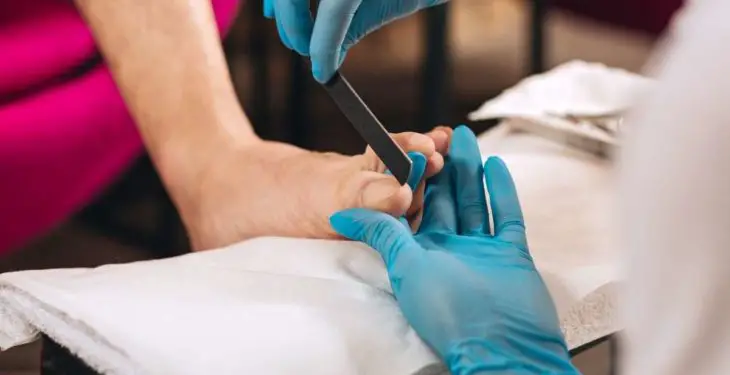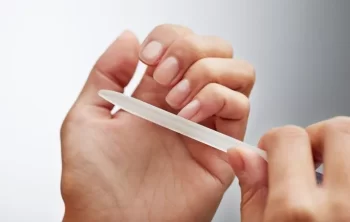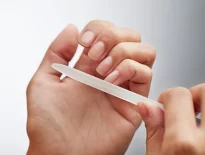After a long day or week at work, people all need something to do to unwind and treat themselves, whether it’s watching their favorite late night movie, eating at a new restaurant in town, turning on Netflix or enjoying a relaxing massage or self-care activity .
One of the best ways for both men and women to unwind after a tough week or month is to book a manicure and pedicure. There’s nothing like the feeling of warm water and essential oils flowing over your feet, sometimes with the added bonus of a foot massage. It’s gotten to the point where a manicure or pedicure is more than just doing your nails. It’s also a form of self-love.
But here comes the problem. How often should you get a pedicure? Manicure? Do you paint your nails regularly?
What is a pedicure?
If you’ve never heard of a pedicure or manicure, you must be living under a rock. But for those who don’t know what that is, what is a pedicure?
A pedicure is a cosmetic and therapeutic treatment of the feet and toenails, removing dead skin and softening calluses to shape, treat and beautify your nails. Contrary to popular belief, a pedicure includes more than just cosmetic procedures on the toenails. It may also involve procedures that use pumice stones to remove dead skin from the soles of your feet.
Pedicure vs. manicure
If you don’t know the difference between a pedicure and a manicure, it’s easy. The difference between a pedicure and a manicure is only where the nail treatment is done.
Nail treatments for toenails or pedicures are performed here during pedicures. But it’s not just manicures, as other foot services like reflexology, foot scrubs, and more can also be performed in pedicures, more on that later.
At the same time, manicure is nail care for the nails on the hands. Since the skin on the hands is more delicate than the skin on the feet, extra care needs to be taken during the manicure process, as carelessness can cause damage.
Whether on the feet or the hands, nail care has a variety of treatments. You can do simple nail polish, gel coat, acrylic, paraffin manicure, powder dip and delicate manicures.
These sessions can last as little as 3 minutes or 1.5 hours or more, especially with acrylic nail polish.
What to do during a pedicure
A regular pedicure is usually done in a traditional salon rather than a massage parlor, but a small foot massage is sometimes included.
During a pedicure, you’ll typically find the following services:
- Soak your feet in warm water to soften and relax the skin and toenails
- Trimming and filing toenails
- Treat cuticles by pushing them back and applying cuticle oil
- Apply base coat, nail polish and top coat
- At the end of the pedicure session, dry briefly under the nail dryer to ensure the coat is dry
A regular pedicure usually includes the steps above. However, you can request additional services, including a relaxing (and tickling) foot scrub to help remove calluses and scaly, dry skin on your feet, usually on the sides of your feet, especially the soles and sides of your feet.
After your foot scrub, you may want to give it a relaxing short foot and calf massage before your nail treatment, with a coat if desired.
So how long does a pedicure last? This depends on the type of service you will be having and the condition of your feet, but it usually takes about 30 minutes to an hour – if you opt for the full service, which includes a foot massage and foot scrub, it can take more than an hour.
How often should you get a pedicure?
Depending on the type of pedicure you’ve had previously, you can get your pedicure anywhere from 2 weeks to a month after your last session. If you decide to get a gel pedicure, it’s best to do it every two weeks. A basic monthly pedicure is fine, as long as your coat is still in good shape at that time.
If you notice that your nail polish is dissolving on a daily basis, you may want to see a podiatrist as soon as possible because they can look awkward, especially if you’re going out in sandals.
Does the time of year affect how often you get a pedicure? let’s find out.
How Often Should You Get a Pedicure in Winter?
Even if your toes are stuffed in your socks and boots, don’t forget to get a regular pedicure at least once a month.
A pedicure is also necessary during the colder months, even if your toes are curled up. Why? Properly trimming and caring for your toenails can help you avoid ingrown toenails caused by the pressure of winter boots and socks.
Cold winter weather also promotes dry and rough skin, wicking away all the moisture from our skin, including from our feet. Without proper attention, your heels can crack very quickly, resulting in unsightly cracked heels that can be accompanied by pain. Try to keep your feet exfoliated and moisturized to avoid this.
Bottom line, tucking your toes under the warmth of your boots and socks doesn’t mean your feet and toenails are free of infections and bacteria. Regular checkups, even in winter, can help your podiatrist spot potential problems that may be growing in the dark, especially fungal bacteria. Nail fungus and athlete’s foot are the most common conditions and are easiest to cure if treated early.
Taking good care of your toes and feet, even through the winter, and keeping them soft, hydrated, and healthy will help them prepare for summer’s upcoming open-toed season.
How often should you get a pedicure in summer?
Sandal or open-toe season means all to see your feet and toenails. While the general rule is to get a pedicure every month or every 4-5 weeks, it is recommended to get pedicures more frequently during the summer months.
How often you should get a pedicure in the summer is ultimately up to you. If you wear sandals a lot, you might want to try a new nail design or polish every two weeks and wear them as much as you want.
Other pedicures like foot scrubs and foot massages once a month are fine, but during the wet summer months you may want to give your feet extra care more often and they will thank you.





